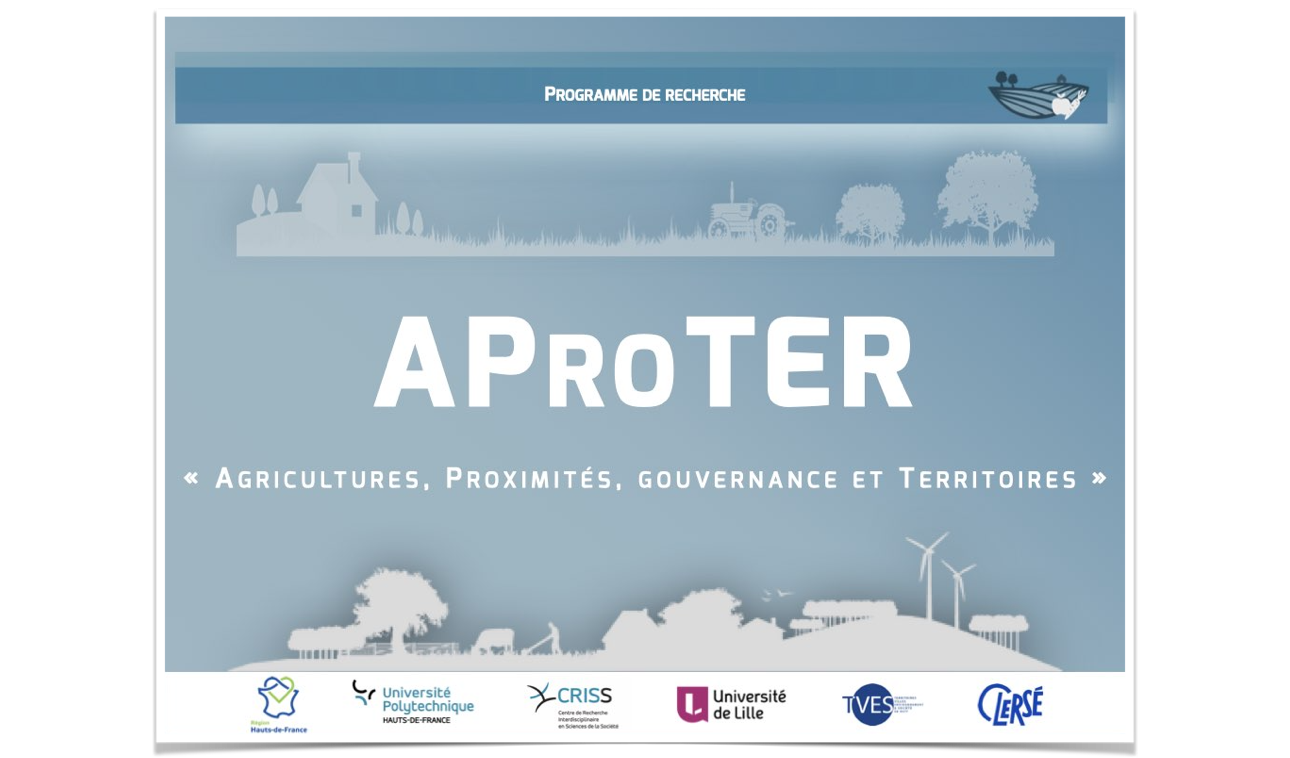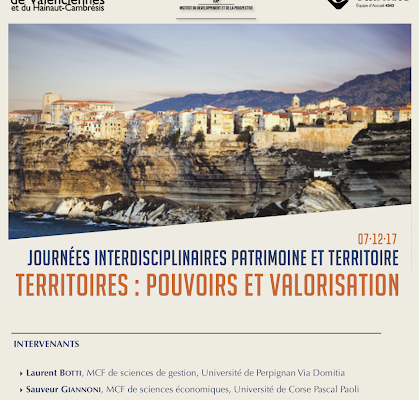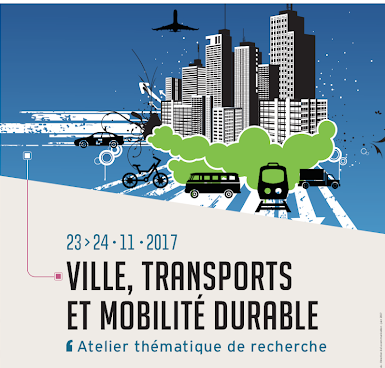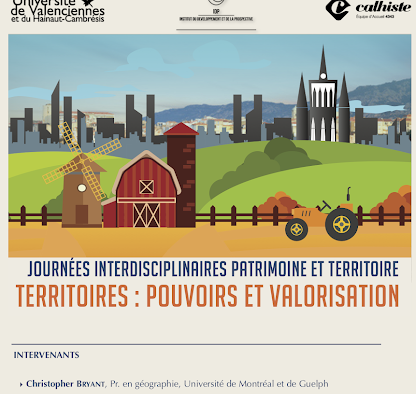Travaux de recherche
Recherche
- Published articles
- Ongoing work
- Research programs
- Workshops and seminars
Publications
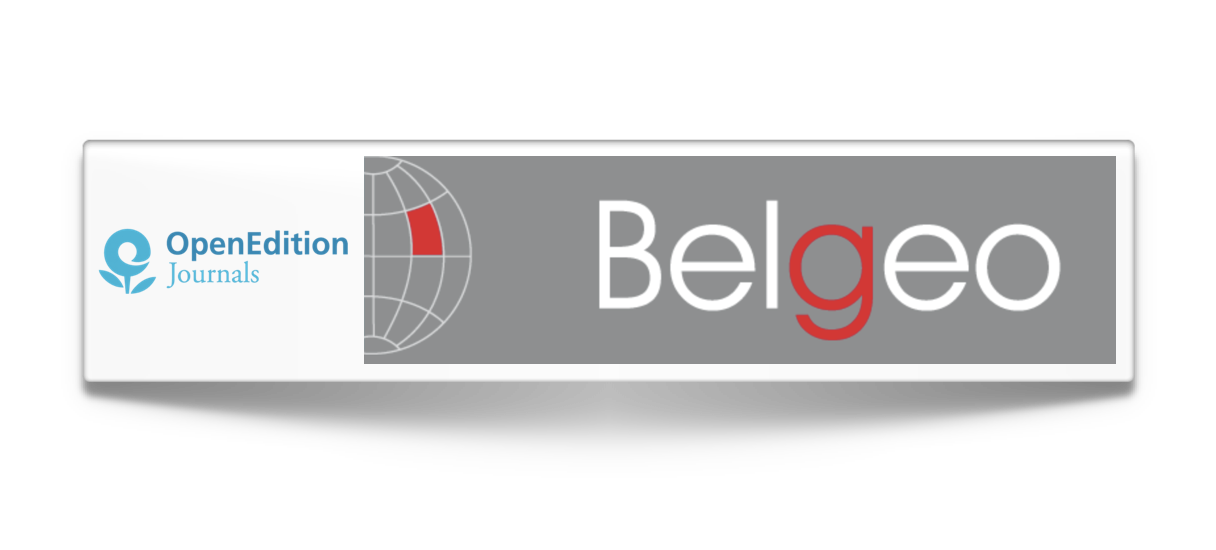
Agricultural dynamics: trajectories vs. model(s)? The case of Douaisis
Ornella Boutry & Nicolas Rouget
Belgeo 2021
Far from the traditional representations between conventional and organic/local/direct-selling farming, there is a diversity of non-exclusive strategies, responding to individual logics related not only to the farm trajectory, but also to the beliefs of the farmer. We propose a new reading grid crossing different dimensions and leading to the classification of farms according to four profiles. Convergences and tensions are developing between the different "forms" of agriculture, reflecting complex processes of hybridization and disjunction. Our results, by providing a better understanding of the changes in French agriculture and highlighting the permeability between agricultural models, could be used to shape public policies towards sustainable agriculture and food.
Keywords: Agriculture, agro-ecological transition, diversity, hybridization, Douaisis, France.

Direct-selling Farming and Urban Externalities: What Impact on Product Quality and Market Size ?
Regional Science and Urban Economics 2018
doi:10.1016/j.regsciurbeco.2018.03.001
In this paper, we study how proximity to cities affects the decisions of farmers to enter the direct-sales market in the presence of spatial heterogeneity in agricultural yields. We develop a theoretical model which takes account of the externality of urban pollution and market access costs on direct-selling profits. We find that regions hosting an intermediate-size city are more likely to supply a wider range of direct-selling varieties. Additionally, we highlight that spatial heterogeneity in productivity creates distortions in the competition among farmers, and can have concomitant undesired effects on both the quality and range of available varieties.
Keywords: Direct-selling farming, spatial heterogeneity, urban
pollution, city size.
JEL Classification: D43; Q13; Q53; R32
The purpose of this paper is to develop a theoretical framework enabling to investigate whether direct-selling farming can develop in the neighboring of highly-crowded cities when the negative effects (externalities) associated to urban proximity are taken into account. We explore this question by building a spatial economic model (i) where farmers can choose between producing homogeneous conventional goods or direct-selling goods, and (ii) in which urban externalities on agricultural yields (namely, urban pollution and market access costs) are introduced.
Our modeling borrows from both spatial economic and monopolistic competition theories. We consider the direct-selling farming as a sector supplying urban households locally with arrays of horizontally-and vertically-differentiated goods sold under a market structure of monopolistic competition. Within this framework, the number of farmers engaged in direct-selling (and, in turn, the set of varieties) can be endogenously determined as a function of the urban population size. Regarding the spatial aspects, it follows the pioneering contribution of Alonso [1964] ; the economy is modeled as a monocentric city in which market access and urban pollution act as distance-dependent externalities. These externalities, depending on the size of the city and on the spread of the pollution over space, induce spatially-varying levels of productivity within the region, and lead us to deal with heterogeneity between farmers.3 Hence, although farmers are supposed to be homogeneous producers ex ante, having the same ability to grow crops, they may become heterogeneous ex-post because of their spatial location within the region. For simplicity, and as a means to examine the direct-selling market in depth, we adopt a partial equilibrium approach, in the sense that the conventional farming and the urban sectors are not explicitly described. It is however worth noting that the inclusion of a land market allows to keep important urban-rural linkages.
As in standard non-spatial model displaying monopolistic competition, we find that the profit of farmers involved in direct-selling rises as the size of the population increases. However, when account- ing for the spatial externalities related to the city size, the relationship becomes much more complex. We notably show that, in highly urban-crowded regions, only the most productive farmers can stay on the market because of the ever more intense competition to acquire land. As a result, regions hosting an intermediate-size city are more likely to supply a wider range of varieties. Additionally, we stress how spatial heterogeneity in productivity levels affects our standard results. We highlight that, by creating distortions in competition between farmers, heterogeneity can have concomitant undesired effects on both the quality and the range of available varieties. We notably provide some preliminary findings showing that increasing the urban pollution can alternatively foster or hinder the production of a direct-selling farmer relative to his competitors, with joint consequences on the quality of the goods supplied. We thus alerts a quality-quantity-variety trade-off that truly depends on the shape and the variation of the productivity over space. This reinforces our previous statement that, when introducing the impact of externalities on a surrounding space, accounting for the potential heterogeneity is necessary to properly capture the implications of urban proximity on direct-selling development.

Local Food, Urbanization, and Transport-related Greenhouse Gas Emissions.
Stéphane De Cara & Carl Gaigné
Journal of Regional Science 57: 75-108. 2017
doi:10.1111/jors.12299
We argue that “buying local” does not necessarily reduce transport-related greenhouse gas emissions, even if production technologies and yields are homogeneous in space. We develop a partial-equilibrium model of rural-urban systems where the spatial distribution of food production within and between regions is endogenous. We exhibit cases where locating some food production in the least-urbanized regions results in lower emissions and higher welfare than if all regions are self-sufficient. The optimal spatial allocation of food production does not exclude the possibility that some regions should be self-sufficient, provided that their urban population sizes are neither too large nor too small.
Keywords: Agricultural location, Transport, Greenhousegas
emissions, Foodmiles, Local food.
JEL Classification: F12, Q10, Q54, Q56, R12
In this paper, we propose an original framework that combines (i) a multi-region model with an explicit description of intra-and inter-regional food transportation flows and their consequences in terms of emissions, (ii) a simple modeling of agricultural markets that permits to focus on the “distance” dimension of local food, and (iii) agglomeration and dispersion forces borrowed from New Economic Geography (NEG) models to discuss the welfare implications of the spatial allocation of food production.
The representation of space and trade flows is admittedly an essential component of any economic geography model (Anas, 2004). As for intra-regional food transport, the model accounts for the need for farmers to deliver their output to elevators or processors within their region of production before it is shipped it to urban centers. The choice of resorting to a multi-region model is motivated by the potential trade-offs between intra- and inter-regional trade and the interactions between trade flows among regions that differ in size. One novel aspect of the model is to consider a “hub-and-spoke” network, whereby all inter-regional trade flows transit through a “hub” located in the central region. This assumption keeps the m-region model analytically tractable. Besides its convenience as a modeling strategy, it is supported by empirical evidence from the logistics of food supply chains (Ala-Harja and Helo, 2014) and by economic justifications of the existence of “hub-and-spoke” systems (Furusawa and Konishi, 2007).
To abstract from the dimensions of local food that are not strictly related to “localness” (quantity, price, quality, etc.), we adopt a partial equilibrium approach, whereby the agricultural product is homogeneous, traded on an integrated and competitive market, and produced in quantity that only depends on the (fixed) total population of farmers. In this context, there are only two ways of developing local food: either urban inhabitants move closer to where food is produced, or food production is developed closer to urban areas. We leave aside the first–and, arguably, much less realistic–option to concentrate on the second one, which is the one targeted by public support aimed at promoting local food. The focus is therefore on the endogenous allocation of food production between and within regions for a given size and distribution of the urban population. This approach is a direct consequence of how the debate about “local food” (as defined above) has been formulated to date. However, the assumption that the spatial distribution of the urban population is treated as an exogenous parameter is not particularly troublesome in our case. Indeed, this assumption implies that we neglect the potential feedbacks of the location of food production on the location of urban workers. Such feedbacks can be reasonably considered to be not significant in the real world. The situation whereby all regions rely only on local food is compared to configurations where the spatial allocation of food production is determined either by a central authority (minimizing transport-related emissions or maximizing social welfare) or by market mechanisms though a bid rent approach. These configurations provide useful benchmarks to analyze the welfare and environmental impacts of local food.
Our findings shed some novel light on these impacts. We exhibit cases where buying local may increase emissions due to food transportation and deteriorate welfare, even though transport modes, production technologies, and natural endowment do not vary in space. The main intuition lies in the trade-off between intra- and inter-regional transportation flows. The former are minimized when food production is distributed mainly among the least-urbanized regions, whereas the latter are minimized when the regions with the largest urban population also host the largest agricultural areas. Therefore, the relocation of food production closer to large cities may increase intra-regional trade in proportions that offset the decrease in inter-regional flows. A direct consequence is that the configuration in which all regions are self-sufficient does not necessarily minimize emissions nor maximize welfare even in the absence of differences in technology and productivity across regions. In other words, the existence of (some) inter-regional trade does not necessarily conflict with environmental or welfare objectives.
Our analysis unveils the role played by agricultural yields and the distribution and size of urban populations in the relationship between the location of food production and GHG emissions. We also find that the optimal allocation of food production does not exclude the possibility that some regions should rely solely on local food. However, this possibility is restricted to regions with urban populations that are neither too large nor too small. The m-region model proposed here makes it possible to characterize urban population size threshold values for which a region should be self-sufficient.
Documents de travail

Conventional vs Organic Farming : Assessing the Impacts of Regional Policies Towards Sustainable Food Supply.
Proceedings 62nd Annual Meeting AFSE - HAL Id : hal-01411693 2015
In a context of heightened environmental awareness, feeding the world’s expanding population in a sustainable way figures among the main challenges to address in the coming decades. Promoted as a means to reduce many of the negative impacts associated with conventional food production, organic farming is however still struggling to establish itself as a viable alternative. In this paper, we investigate the options for a heavily food-dependent region to reduce the environmental impact of its food supply system. We develop a spatial model describing the regional land allocation between two types of agricultural practices (organic vs conventional) and we characterize the farming pattern that allows minimizing the emissions due to the regional food supply. Then, we examine the policies to implement in order to achieve desired environmental results in a decentralized economy. The scope and the limits of these instruments are further considered.
Keywords: Agricultural Practices, Land Allocation, GHG, Public
Policies.
JEL Classification: F12; Q18; Q56; R12
The purpose of this work is to undertake a theoretical analysis of food sourcing decision. The frame- work we built allows to describe the way farmers distribute themselves between the two agricultural productions (namely, organic and conventional) and to determine the relationship between land allo- cation and the total volume of GHG emitted by the agricultural sector at the regional scale. In this respect, we show that improving the sustainability of current food supply system revolves essentially around finding the ”right” balance between local production and imports, while striving to adopt cleaner agricultural practices. Not surprisingly, we find that the lowest-emissions outcome is strongly bound to the value of the emissions factors and closely tied to the level of urbanization as it contributes to weight the share of each flow in the total GHG emissions. We highlight that a region must keep in mind that any decision to foster the development of organic farming in its own land implies changes on inter-regional food trade and, therefore, potential extra emissions due to imports needed to meet the regional demand. In particular, we stress that promoting organic farming when inter-regional trade in conventional goods account for a large part in emissions may lead to more emissions through spillover effects; as more land is dedicated to organic production, regional production in conventional food decrease which has an impact on inter-regional trade flows.
From a policy aspect, we find that the marginal effect of every tool studied is positively correlated to the level of urbanization, suggesting that, to be efficient, policies must consider the demographic characteristics of the region and be designed according to these features. We also highlight that policies can be contradictory when used in some combinations; production-based tools are likely to see their efficiency weaken if measures leading to a rise of transportation costs (fuel tax, VMT fees, charge on individual haulage...) are concomitantly implemented. Finally, when looking at the relationship between the agricultural land distribution and the regional welfare, we alerts that, under certain circumstances, public interventions can jointly induce cuts in emissions and a welfare improvement. However, equity in wealth distribution may not be ensured and in some cases, policies can even lead to widen the gaps among urban workers, organic farmers and conventional farmers.

Feeding the Cities and GHG Emissions : Beyond the Food Miles Approach.
Stéphane De Cara & Carl Gaigné
Working Paper Series, Les Cahiers de la Chaire Économie du Climat 2011
In this paper, we study the impact of urbanization on the location of agricultural production and the GHG emissions related to transport. We develop an economic geography model where the location of agricultural activities and the location of urban population are endogenous. We show that increasing agricultural yields induce the spatial concentration of agricultural production in the less urbanized region if agricultural transport costs are relative low and in the more urbanized region otherwise. In addition, interregional trade in agricultural commodities is desirable to reduce GHG emissions, except when urban population is equally split between cities. However, market may yield too agglomeration of agricultural production when agricultural yield is high and when agricultural transport costs are low.
Keywords: Agricultural location, Transport, Greenhousegas
emissions, Foodmiles, Local food.
JEL Classification: F12, Q10, Q54, Q56, R12
Travaux en cours

The Sustainability of Urban Food Networks : a Spatial-Theoretical Approach.
Public Transport Accessibility and Air Pollution in a Monocentric City Model.
New Urban Mobility and Land-use Policies : Moving Towards Sustainable and Resilient Cities ?
W. Oueslati
Manuscrits

Thèse
Localisation des productions agricoles et durabilité des systèmes d'approvisionnement alimentaire en milieu urbain.
Thèse de doctorat en sciences économiques 2014
sous la co-direction de P.A. Jouvet, C. Gaigné et S. De Cara
Au cours des soixante dernières années, la population mondiale a connu un sursaut spectaculaire, passant de 2,5 milliards d’habitants à la fin de la Seconde Guerre mondiale à 7 milliards en 2011. Cette croissance démographique se distingue des précédents épisodes tant par son importance que par l’apparition conjointe d’une tendance nouvelle et soutenue à la concentration des populations au sein des villes. Appelée à se renforcer partout dans le monde, cette tendance au grossissement des villes lance un véritable défi à la communauté internationale en matière de durabilité de notre système économique en général et alimentaire en particulier. Cette thèse propose un traitement théorique de la question de la durabilité des systèmes d’approvisionnement alimentaires en milieu urbain. A la frontière entre économie publique et économie géographique, elle poursuit comme objectif principal de permettre la conduite d’une analyse formalisée des arbitrages environnementaux et sociaux dans un cadre spatial explicite. En outre, l’idée selon laquelle aucune réponse ne saurait être satisfaisante sans qu’une attention spécifique soit portée aux interactions spatiales, économiques et écologiques entre espaces urbains et agriculture constitue l’un des positionnements clés défendus dans ce travail. De manière générale, les travaux de cette thèse font apparaître l’élément majeur suivant: du fait de la forte et inextricable interconnexion entre milieux urbain et rural, l’évaluation environnementale, sociale et économique d’un système alimentaire ne peut se faire qu’en con- naissance des caractéristiques démographiques et physiques de la ville concernée.
Mots-clés: Localisation, Transport, GES, Kilomètres alimentaires, Circuits-courts
Classification JEL: F12, Q10, Q54, Q56, R12

